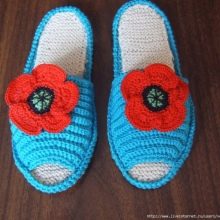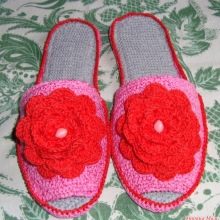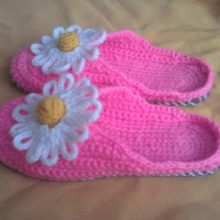Knitted felt flip flops
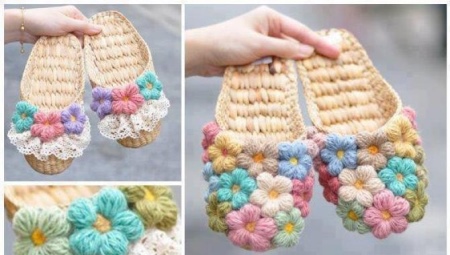
Nowadays, handmade things have become fashionable - clothes, shoes, accessories and much more. In the house, handmade creations create an atmosphere of comfort, here they are like nowhere else. Home shoes, made by the careful hands of a craftswoman, will be comfortable, original and will last a long time. That is why such things are in great demand.
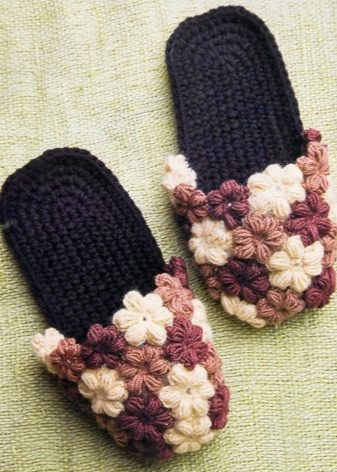
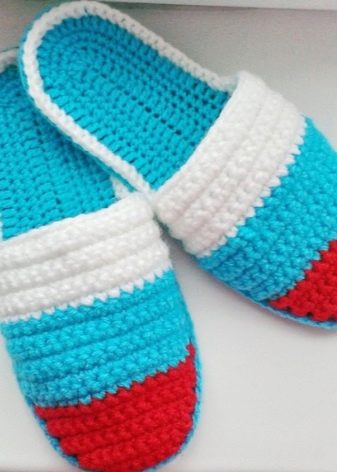
Main advantages
Home slippers can be made of different materials and in different techniques; knitted slippers are very popular. Usually, home shoes are crocheted and very often use felt soles in their manufacture. This choice is easy to explain: felt is made from natural wool and is an environmentally friendly non-woven material. It also has a number of useful properties that make felt-soled slippers simply an irreplaceable thing in the house.
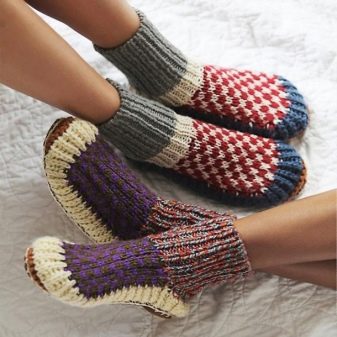
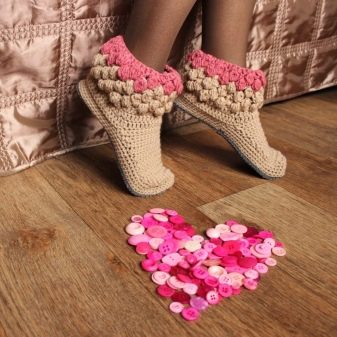
Felt outsole:
- retains heat well, your feet will definitely not be cold;
- resistant to wear - will last a long time;
- has antibacterial properties;
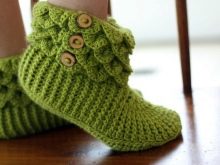
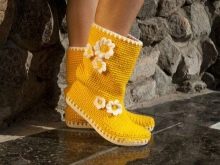
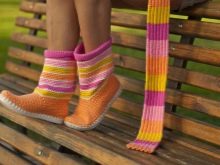
- soft;
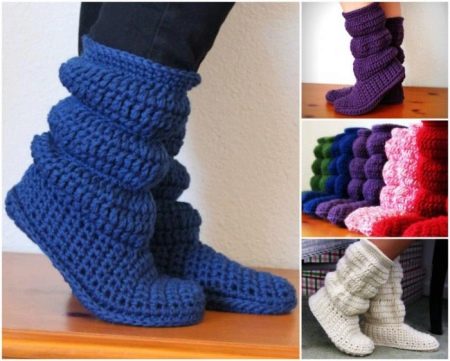
- has antistatic properties.
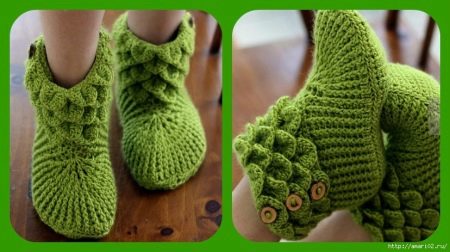
Design
One of the most popular models are slippers-slippers. This comes as no surprise as mules are so easy to put on and take off. In addition, such shoes usually serve longer than slippers of other models, from which the heels are first of all trampled.
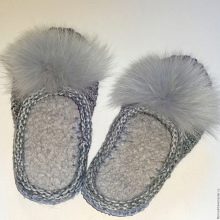
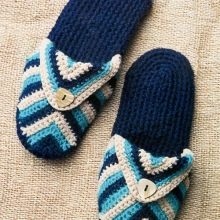
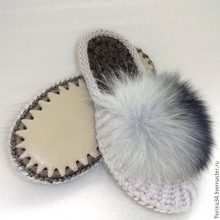
Knitted slippers with felt soles can be made from various types of yarn - it all depends on the design that the craftswoman chooses. However, most often knitters choose semi-woolen or woolen yarn, because it is assumed that such shoes will be worn in the cold season and should be very warm. These slippers are available with or without a knitted insole.
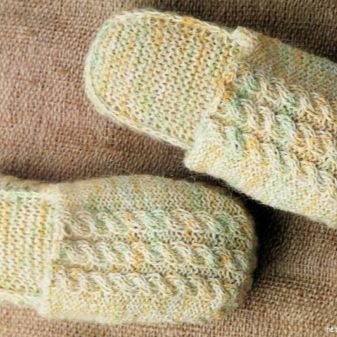
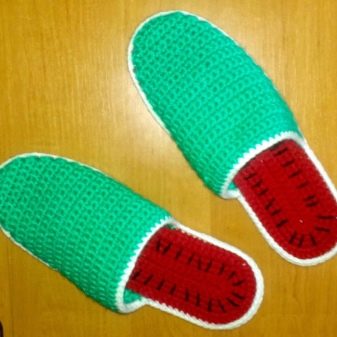
Home shoes for toddlers, including those with a felt insole, must have heels; flip flops are not suitable for small children.
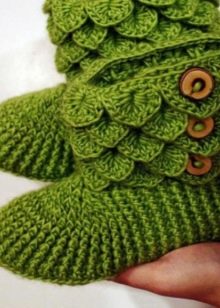
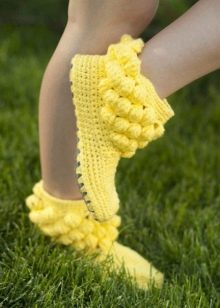
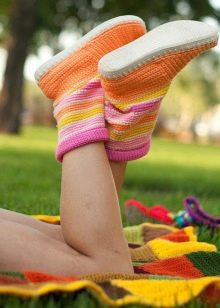
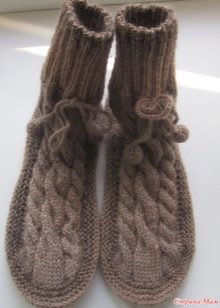
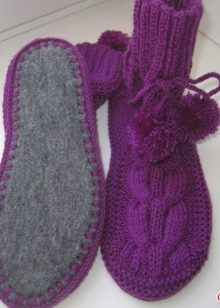
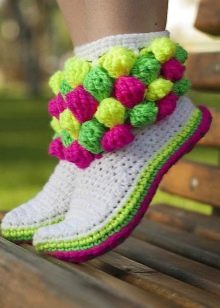
The design of knitted flip flops can be different. The front of them can be decorated with:
- muzzles and figures of animals;
- knitted flowers;
- pompoms;
- fur;
- ribbons;
- knitted fruits;
- ornament;
- buckles;
- beads;
- buttons;
- symbols of computer games;
- different logos, emblems.
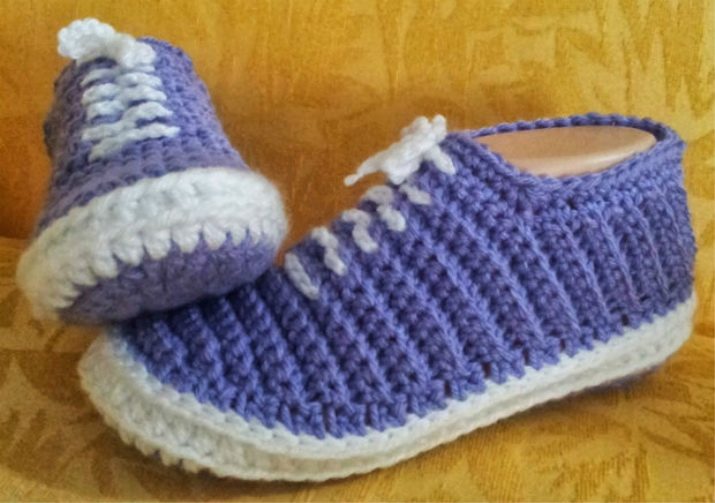
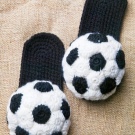
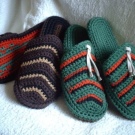
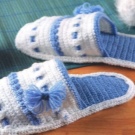
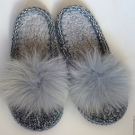
The fantasy of the craftswomen seems simply inexhaustible.
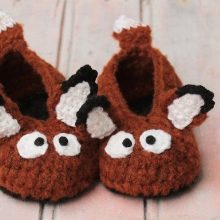
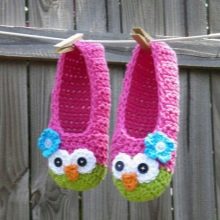
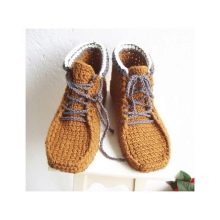
How to take care of your shoes
With all its advantages, knitted shoes with felt soles require special care, precisely because they are made from natural materials.
- First of all, dry cleaning of the felt with a brush is recommended. Such slippers can only be washed by hand in warm water (up to 30 ° C) using special products designed for wool. After washing, the thing cannot be twisted, it must be carefully wrung out, having previously wrapped in a cloth.
- It is better to dry using special pads, or laying horizontally on a cloth. If all these conditions are met, you can not be afraid that the thing will shrink.
- Slippers with felt soles should be stored in paper bags; care should be taken to prevent moths from reaching the shoes.
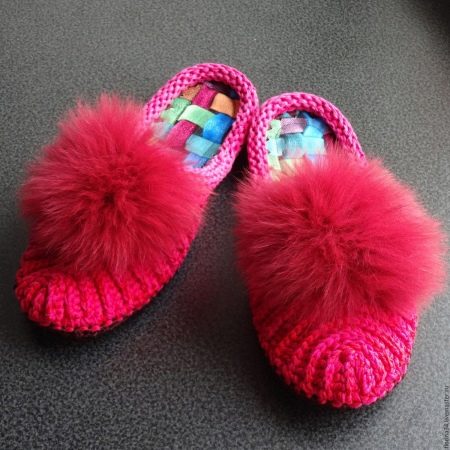
How to do it yourself?
If you like to do needlework, then making your own knitted slippers with felt soles will be a very good idea. To do this, you need a very small amount of material. Craftswomen usually use leftover yarn to make slippers, which accumulates after completing a series of larger knitting projects.
Slippers are usually crocheted, for this you need the most minimal knitting skills. For knitting a slap, it is better to take a yarn containing wool in it, in this case the thing will turn out to be warm. It is good if the yarn contains cotton or polyamide (nylon). These additives will give the slippers abrasion resistance. The size of the hook is selected taking into account the thickness of the yarn (most often these are hooks No. 3–4).
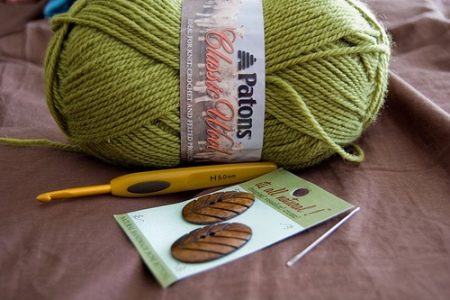
A ready-made felt insole of the size you need is taken as a sole. Knitting can be started directly from the sole, tying the insole around the edges. To do this, you will first need to make holes in the insoles or lay a loop seam along their edge with a needle.
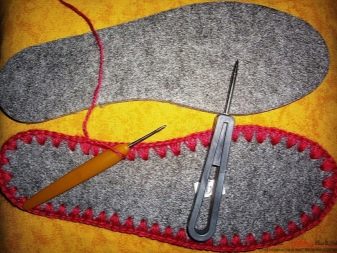
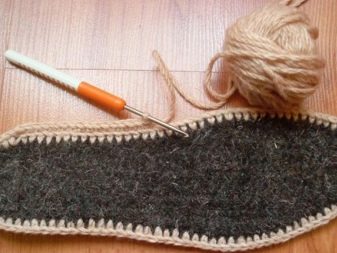
You can make a separate slap top and sew the finished part to the insole with a strong synthetic thread. In this case, for the top of the slippers, you can knit a semicircular motif, the last rows of which can be knitted without expanding the fabric to add volume to the detail. A strap of the required length is tied to the straight part of the motif, and from it - two sides of future slippers, triangular in shape.
